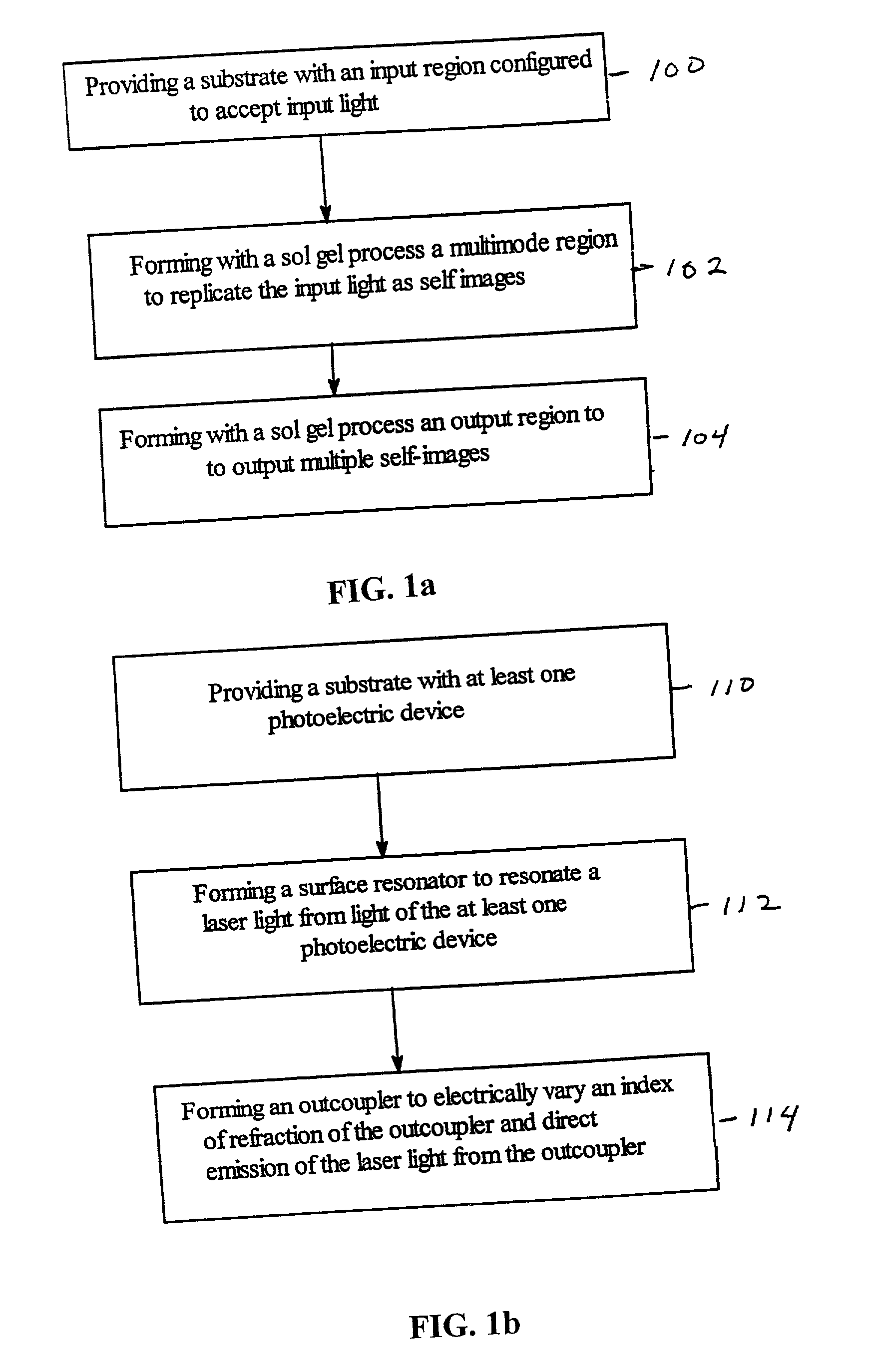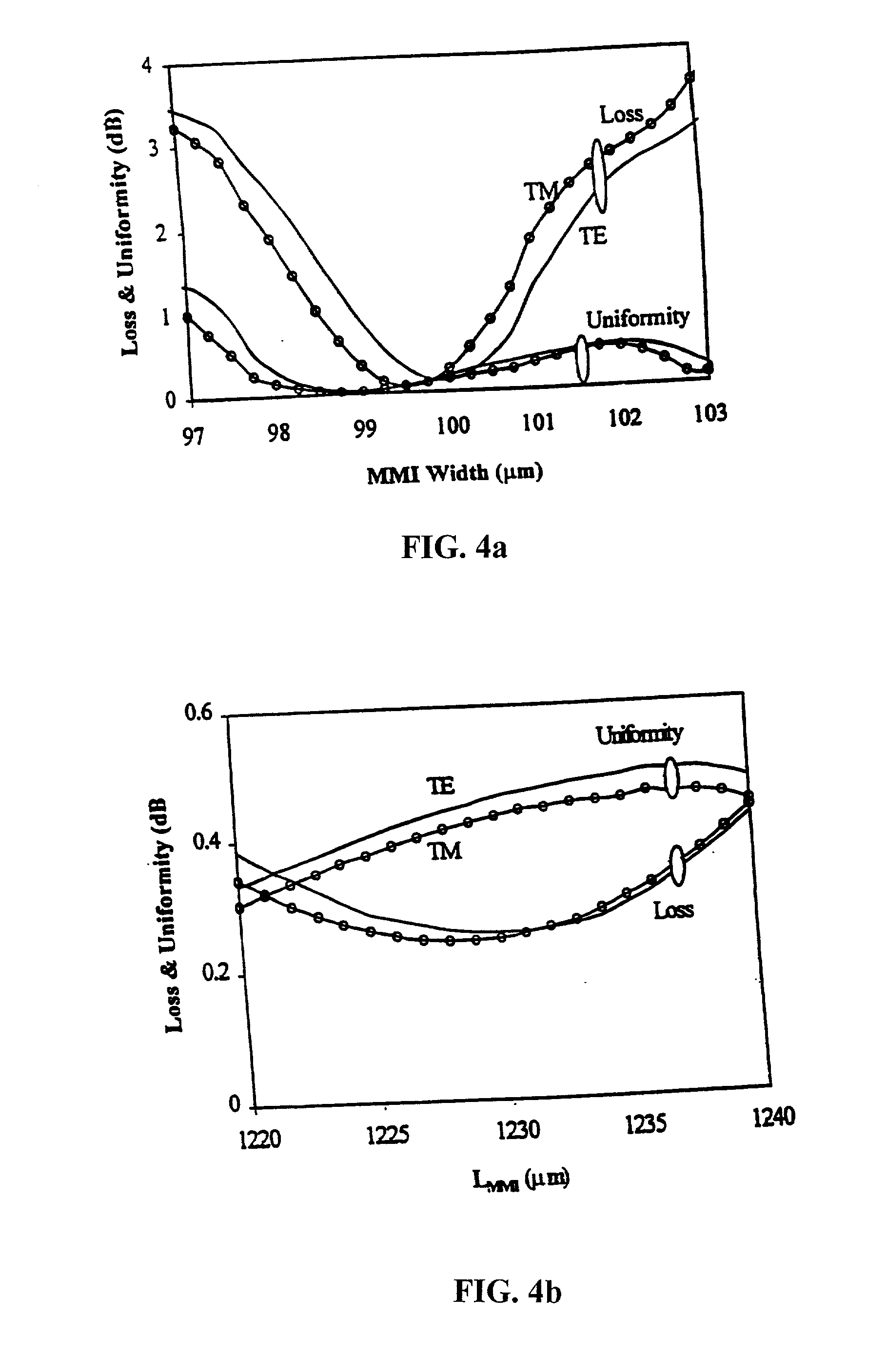Integrated hybrid optoelectronic devices
a hybrid optoelectronic and integrated technology, applied in the direction of instruments, semiconductor lasers, photomechanical apparatuses, etc., can solve the problems of inability to detect polarization, low loss devices, and the effect of wdm on the affecting of nearly all optical network systems
- Summary
- Abstract
- Description
- Claims
- Application Information
AI Technical Summary
Benefits of technology
Problems solved by technology
Method used
Image
Examples
Embodiment Construction
[0060] Referring now to the drawings, wherein like reference numerals designate like or corresponding parts throughout the several views, and more particularly to FIG. 1a thereof, FIG. 1a is a flow chart showing processing steps according to the present invention which based on sol gel processing produce hybrid optoelectronic devices integrating passive optical components with active optoelectronic components. Fabrication of hybrid optoelectronic devices using sol-gel processing requires, in addition to lossless sol gel materials, a detailed knowledge of the optical properties of the cured sol gel material, such as optical loss, optical index, optical index dispersion, and polarization sensitivity. The fabrication process utilizes steps which integrate the sol-gel materials with traditional optical materials and active optoelectronic components such that unintentional losses from light scattering are avoided. Control of these losses depends not only on the internal and surface prope...
PUM
| Property | Measurement | Unit |
|---|---|---|
| thickness | aaaaa | aaaaa |
| temperatures | aaaaa | aaaaa |
| surface roughness | aaaaa | aaaaa |
Abstract
Description
Claims
Application Information
 Login to View More
Login to View More - R&D
- Intellectual Property
- Life Sciences
- Materials
- Tech Scout
- Unparalleled Data Quality
- Higher Quality Content
- 60% Fewer Hallucinations
Browse by: Latest US Patents, China's latest patents, Technical Efficacy Thesaurus, Application Domain, Technology Topic, Popular Technical Reports.
© 2025 PatSnap. All rights reserved.Legal|Privacy policy|Modern Slavery Act Transparency Statement|Sitemap|About US| Contact US: help@patsnap.com



